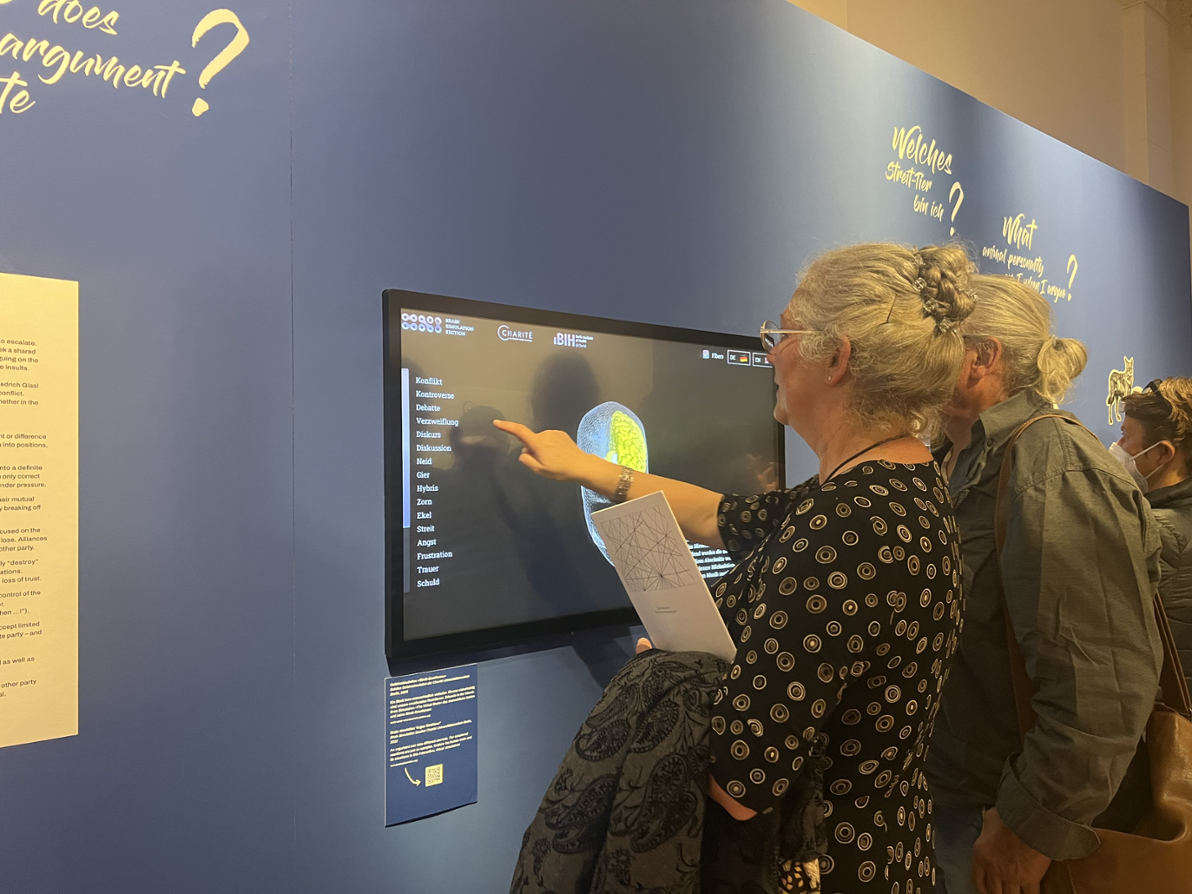Emotions are literally the bedrock of all human experience and act to dictate how we respond to a particular event and guide us through our days. Emotions, due to good news, threats, or adverse events, majorly determined choice, actions, and health. This comprehensive review surveys the labyrinthine journey of how the linkage between physiologic underpinning and cultural context interfaces with practical applications for personal development and social interaction.
What, then, are emotions? While psychologists define them as complex psychological states that involve personal experiences, physiological arousal, and behavioral expressions, the Hockenberys believe that it is far more complex and comprises inner perceptions as well as outer expressions.
Also Read : The Six Fundamental Emotions And Their Impact On Human Behavior
For example, the tingle of delight at hearing some good news, or the surge of fear when danger approaches, is just a plain example of the dynamicFAILED range of human emotional life;.
Although Psychologist Paul Ekman suggested the basic six universal emotions—fear, disgust, anger, surprise, joy, and sadness—that were beyond cultural influence.
Robert Plutchik developed Ekman further to come up with the wheel of emotions that displayed how the base emotions mix and lead into further refinement. This kind of growing vision thus can show their nature, viz., variability and complexities within different contexts and individuals.
While emotions are subjective feelings, on the other hand, they are a part of physiological reactions independently regulated by the autonomic nervous system. The sympathetica nervosa reacts with a fight-or-flight reaction that helps the organism in that, if it is under some type of stressful condition, then it would be prepared to deal with the unpleasant situation.
The same point is brought out by neurobiological research into the components of emotions, through which the contribution made by limbic structures, above all the amygdala, in processing fear and other emotional stimuli goes on to further prove an aspect of cognition being closely linked with emotion.
More important, perhaps, is the way in which emotions are shaped and directed by cultural norms. For instance, in Western cultures, high-arousal emotions like excitement and distress are more valued, but in Eastern cultures, as far as can be ascertained, calmness or serenity forms the most valued tinge to emotional life portrayed in art and literature.
Cultural difference underlines the same adaptive nature of how emotion is expressed and the function it has in directing social behavior and bounding.
Even more specific proposals about the mechanisms of emotional experience are provided by theories of emotion. Charles Darwin’s evolutionary theory of emotion holds that natural selection shaped the function of emotions as adaptations to the way the environment presented obstacles to survival and reproduction.
What the James-Lange theory represents is a hypothesis stating that an emotion is a conscious perception of visceral reactions; the implication, in effect, is that each changing condition of the body instantiates into emotion only cognitively.
The simultaneously held basic theories of emotions, some of which are contemporaneous views, taken up and built into the Cannon-Bard theory and the Schachter-Singer theory point out the complexity that emotional processing is.
All these provision for the simultaneously occurring nature of emotional and physiological reactions. These focus on the interactive nature of appraisal, emotional perception, and cognitive control in shaping an individual’s emotional experience.
Emotions may even be distinguished at an even finer level of categorization as primary and secondary, and they have rather different adaptive functions.
Primary emotions are happiness, sadness, and anger that have been experienced across all people and cultures. Secondary emotions are derived from the interaction of primary emotions with cognitive appraisals, which are far more culturally dependent and variable than primary emotions themselves are.
This distinction does nothing but highlight all of the possible emotional responses people are capable of having, depending on circumstances.

Beyond individual feelings, feelings and moods embody other expansions of emotional experience. While emotions are rather short-lived and more intense reactions to given stimuli, feelings become more subjective appraisals or perceptions about the emotional experience itself and its’ evaluations.
Opposed to this, moods are of longer duration such that the particular source could be indeterminate while still having deep impacts on psychological well-being just as acting like a social buffer against psychosocial stressors.
Emotional awareness and regulation are being put into practice to become known processes supporting personal well-being and interpersonal relationships. Mindfulness practices, emotional intelligence trainings, and cognitive-behavioral techniques give tools that equip an individual for better familiarity and more appropriate regulation of his or her emotional responses.
Emotional resilience and emotional adaptability confer leverage, enabling negotiation with greater circumspection and efficiency through trials and tribulations presented in life’s journey.
Affect is intrinsic to the human experience, bearing on all of the major components of human response: cognition, behavior, and social interactions. More specifically, recent dynamism in research and interdisciplinarity has further broadened the concept of emotion.
The neurobiological, cultural, and psychological dimensions of emotion represent dimensions that would come closer to light than not. Emotions are diversified as control over emotional intelligence is better, culminating in self-awareness and more empathetic connectedness with others.
It is only this dynamic interplay of human feelings and experiences; further elaboration underlines that justifies another in-depth exploration into these fine-grained mechanisms shaping our emotional lives.
Understandings that help propel navigation toward a complex world should, at one level, hold promise for supporting growth and personal resilience and, at the collective level, flourishment.
- American Psychological Association. Emotion.
- Hockenbury D. Hockenbury SE. Discovering Psychology.
- Gu S, Wang F, Patel NP, Bourgeois JA, Huang JH. A model for basic emotions using observations of behavior in drosophila. Front Psychol. 2019;10:781. doi:10.3389/fpsyg.2019.00781
- Angioni M, Tuveri F. Discovering emotions through the building of a linguistic resource. Proceedings of the 15th International Conference on Web Information Systems and Technologies. 2019:351-357. doi:10.5220/0008352803510357
- Ekman P. Basic emotions. In: Dalgliesh T, Power MJ, eds. Handbook of Cognition and Emotion. 1999:45-60. doi:10.1002/0470013494.ch3
- Chafale D, Pimpalkar A. Review on developing corpora for sentiment analysis using Plutchik’s wheel of emotions with fuzzy logic. Int J Comput Sci Engineer. 2014;2(10):14-18.
- Balzarotti S, Biassoni F, Villani D, Prunas A, Velotti P. Individual differences in cognitive emotion regulation: Implications for subjective and psychological well-being. J Happiness Studies. 2014;17:125-143. doi:10.1007/s10902-014-9587-3
- Bocchio M, McHugh ST, Bannerman DM, Sharp T, Capogna M. Serotonin, amygdala and fear: Assembling the puzzle. Front Neural Circuits. 2016;10:24. doi:10.3389/fncir.2016.00024
- Klumpers F, Morgan B, Terburg D, Stein DJ, van Honk J. Impaired acquisition of classically conditioned fear-potentiated startle reflexes in humans with focal bilateral basolateral amygdala damage. Soc Cog Affect Neurosci. 2015;10(9):1161-1168. doi:10.1093/scan/nsu164
- Lim N. Cultural differences in emotion: differences in emotional arousal level between the East and the West. Integrat Med Res. 2016;5(2):105-109. doi:10.1016/j.imr.2016.03.004
- Dubey M, Singh L. Automatic emotional recognition using facial expression: a review. Int Res J Engineer Tech. 2016;3(2):488-492.
- Ludwig RJ, Welch MG. Darwin’s other dilemmas and the theoretical roots of emotional connection. Front Psychol. 2019;10:683. doi:10.3389/fpsyg.2019.00683
- James W. What is an emotion?. Mind. 1884;9(34):188-205. doi:10.1093/mind/os-IX.34.188
- Coles NA, Larsen JT, Lench HC. A meta-analysis of the facial feedback literature: Effects of facial feedback on emotional experience are small and variable. Psychol Bull. 2019;145(6):610-651. doi:10.1037/bul0000194
- Spielman RM, Dumper K, Jenkins W, Lacombe A, Lovett M, Perlmutter M. Emotion. Psychology – H5P Edition.
- Schachter S, Singer J. Cognitive, social, and physiological determinants of emotional state. Psychol Rev. 1962;69(5):379-399. doi:10.1037/h0046234
- Lazarus RS, Folkman S. Stress, Appraisal, and Coping.
- Matthews T, Danese A, Wertz J, et al. Social isolation, loneliness and depression in young adulthood: a behavioural genetic analysis. Soc Psychiatry Psychiatr Epidemiol. 2016;51(3):339-348. doi:10.1007/s00127-016-1178-7
- Kozlowska K, Walker P, McLean L, Carrive P. Fear and the defense cascade. Harvard Rev Psychiatry. 2015;23(4):263-287. doi:10.1097/hrp.0000000000000065
- Oaten M, Stevenson RJ, Williams MA, Rich AN, Butko M, Case TI. Moral violations and the experience of disgust and anger. Front Behav Neurosci. 2018;12. doi:10.3389/fnbeh.2018.00179
- Martin RC. Including maladaptive anger in psychology courses. Teach Psychol. 2019;47(1):102-107. doi:10.1177/0098628319889540
- Zhu C, Li P, Zhang Z, Liu D, Luo W. Characteristics of the regulation of the surprise emotion. Sci Rep. 2019;9(1):7576. doi:10.1038/s41598-019-42951-y
- American Psychological Association. Primary emotion.
- Braniecka A, Trzebińska E, Dowgiert A, Wytykowska A. Mixed emotions and coping: the benefits of secondary emotions. PLoS ONE. 2014;9(8):e103940. doi:10.1371/journal.pone.0103940
- American Psychological Association. Secondary emotion.
- Cookson LJ. Differences between feelings, emotions and desires in terms of interactive quality. ASSRJ. 2015;2(7). doi:10.14738/assrj.27.1318
- American Psychological Association. Mood.
- American Psychological Association. Negative emotion.
- Michopoulos V, Powers A, Gillespie CF, Ressler KJ, Jovanovic T. Inflammation in fear- and anxiety-based disorders: PTSD, GAD, and beyond. Neuropsychopharmacol. 2017;42:254-270. doi:10.1038/npp.2016.146
- Lawrence EM, Rogers RG, Wadsworth T. Happiness and longevity in the United States. Soc Sci Med. 2015;145:115-9. doi:10.1016/j.socscimed.2015.09.020
- Pimple P, Shah A, Rooks C, et al. Association between anger and mental stress-induced myocardial ischemia. Am Heart J. 2015;169(1):115-121.e2. doi:10.1016/j.ahj.2014.07.031

